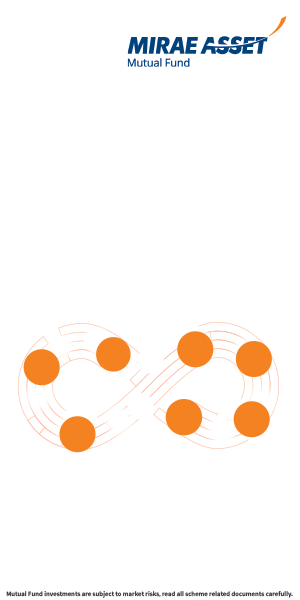How is Systematic Withdrawal Plan better than Dividend Option: Part 1

At www.advisorkhoj.com we get many queries and comments from investors daily; usually, we get more than 400 queries and comments from investors and advisors every month. Though responding to all the investor queries and comments takes up a lot of my team’s time, it is extremely useful from an investor engagement perspective and helps my team get valuable insights into investor thinking.
Over the past many months, we are seeing a lot of queries on mutual fund dividends and systematic withdrawal plans. In this two part post we will discuss both mutual fund dividend options and systematic withdrawal plans, so that you can make smarter investment decisions.
Investors have always been interested in stock or mutual fund dividends because it provides them cash-flows from time to time. However, we think that, the recent increase in interest in mutual fund dividends is related primarily to two factors – falling interest rates (of bank fixed deposits and Post Office small savings schemes) and the high stock market. While the interest in dividends is understandable, we think that there are a number of misconceptions regarding mutual fund dividends among retail investors. The attraction for high dividends among many retail investors can also make them vulnerable to mis-selling. Investor education and awareness is our mission in Advisorkhoj.com; we will devote the first part of this two part post in discussing dividend options of mutual fund schemes and some common misconceptions regarding mutual fund dividends.
What is dividend option?
Mutual fund dividend options are essentially different modes of profit distribution. A mutual fund scheme makes profit from time to time through buying and selling stocks. In the Growth Option of a scheme the profits are reinvested in the scheme; in the Dividend Option the profits are distributed to the investors as dividends. Dividends are declared on a per unit basis. Let us assume you own 1000 units of a mutual fund scheme. The Asset Management Company (AMC) declares a dividend of Rs 5 per unit; you will receive a total dividend of Rs 5,000.
A scheme can have multiple dividend options e.g. Annual Dividend, Quarterly Dividend, Monthly Dividend etc. depending on the distribution frequency. Investors can choose the option depending on the frequently they want to receive dividends. There is another dividend option known as Dividend re-investment Option, where the dividend declared by the scheme is re-invested to buy units of the scheme at ex-dividend NAVs. Investors can switch between dividend options of a scheme without attracting any exit load, but if you switch from dividend to growth or growth to dividend then exit load rules (if any) will apply.
Investors should know that, the NAVs of different scheme options will be different. The NAVs of Growth Options will be higher than Dividend Options because the profits are re-invested in the scheme instead of being paid out to investors. The NAVs of different Dividend Options of a scheme will also be different. However, the NAVs of Dividend re-investment Option and the corresponding Dividend Option will be the same.
Dividends paid by mutual funds are tax free in the hands of the investors, but some mutual fund schemes may have to pay dividend distribution tax (DDT) before paying dividends to investors. Equity mutual funds (schemes where percentage of equity in asset allocation is more than 65%) do not have to pay dividend distribution tax and hence the dividends are totally tax free for investors. However, non equity mutual funds (schemes where percentage of equity in asset allocation is less than 65%) will have to pay dividend distribution tax (DDT) at the rate of 28.84% before paying dividends to investors. The tax treatment of mutual funds is an important consideration in choosing between Dividend Options and Systematic Withdrawal Plans from Growth Options, which we will discuss in part 2 of this post.
Let us now discuss some common misconceptions regarding mutual fund dividends.
Mutual fund dividend option misconceptions
- Mutual fund schemes which pay high dividends are good because they invest in high dividend yield stocks: Investors should understand that, dividends are paid from the profit of a fund. There can be two sources of profit in a fund – dividends and capital gains. A mutual fund scheme which pays high dividends may not necessarily be investing in high dividend yield stocks; it can simply be churning its portfolio more often to book more profits. Higher portfolio turnover does not necessarily make a fund better; often a long term buy and hold strategy has generated higher long term returns for investors.
- Dividend paying mutual funds are less risky: Whether your mutual fund scheme pays dividends or not, does not make it more or less risky. The risk profile of a mutual fund scheme depends on the asset allocation and the investment strategy (e.g. large cap versus midcap stocks, cyclical versus defensive stocks, growth versus value stocks etc) of the fund manager. It is true that if a mutual fund pays dividends in bull market, then the fall in the bear market that follows will be less in absolute terms since your investment value itself will be lower, but by taking dividends you will be giving up on future returns as well. The decision to invest in growth versus dividend option should depend on your cash-flow needs and not your risk appetite.
- Switching to dividend option in high market is a good idea because the fund manager will book profits in over-valued stocks: The fund portfolio is same for both growth and dividend options. If a fund manager thinks that there are over-valued stocks in the fund portfolio he or she will book profits; in growth options the profits are re-invested in the scheme, whereas in dividend options the profits are distributed to investors.
- Regular plans are better than direct plans because they usually pay higher dividends: It has been seen that, regular plans pay higher dividends than direct plans but it is not due to a difference in performances or because AMCs want to encourage regular plans over direct plans.
We discussed earlier that, dividends are paid from the accumulated profits of a scheme. From an accounting perspective, however, the distributable surplus of a scheme is calculated using the Net Asset Value (NAV), face value, unrealized gains and an accounting term known as Unit Premium Reserve. The accounting of Unit Premium Reserve is outside the scope of this article; suffice to say for the purposes of this article that, Unit Premium Reserves for most direct plans are higher than the regular plans. The higher Unit Premium Reserve makes the distributable surplus of direct plans lower than regular plans and hence they declare lower dividends. It has purely an accounting issue and has got nothing to do with the performances of these plans. The fact is that, direct plans give higher returns than regular plans because the expenses of direct plans are lower than that of regular plans. - Schemes which have high AUMs are likely to declare more dividends: This is another common misconception. Dividends are paid from the accumulated profits of a fund. Some investors may incorrectly perceive high Assets under Management (AUM) as lot of accumulated profits but it is not true. The AUM can be high for many reasons, not just accumulated profits. Investors should also remember that, mutual fund dividends are paid at the discretion of the fund and are not assured.
- Investing in high dividend paying fund can help investors to book loss and reduce tax: Some investors who may have prior information that a fund is about to pay a high dividend, invest in the fund just before the dividend is declared, get the dividend (equity and balanced fund dividends are tax free) and then immediately redeem to book a loss (the fund NAV falls after the dividend is declared) to offset against other short term capital gains. This practice is known as profit stripping or dividend stripping. Dividend stripping, though not illegal, is against the spirit of the tax laws of the land because it is a case of tax evasion. The Income Tax Department has amended dividend distribution tax laws to discourage dividend stripping. In order to claim a short term capital loss, you need to invest in the fund at least three months before the dividend record date or remain invested in the fund for at least 9 months after the dividend record date.
Conclusion
We in Advisorkhoj.com want you to make investments based on sound principles like investment goals, risk appetite, proper asset allocation, risk profile of a fund and fund manager performance. Making investment decisions based on incorrect perceptions and trying to second guess what the fund manager is doing, will lead you to make wrong investments. If your investment objective is capital appreciation then you invest in Growth Option of the mutual fund scheme. If you need income (regular cash-flows) from your investment then Dividend Option is the appropriate choice. However, there is another smart plan which can also provide you with regular income – Systematic Withdrawal Plan of mutual funds. In the second part of this series, we will discuss, Systematic Withdrawal Plan and compare it with dividend option.
Mutual Fund Investments are subject to market risk, read all scheme related documents carefully.
RECOMMENDED READS
Mirae Asset Global Investments is the leading independent asset management firm in Asia. With our unique culture of entrepreneurship, enthusiasm and innovation, we employ our expertise in emerging markets to provide exceptional investments opportunities for our clients.
Quick Links
- Fund Manager Interview - Mr. Neelesh Surana - Chief Investment Officer
- Fund Review - Mirae Asset Emerging Bluechip Fund : Best Midcap Mutual Fund in the last 6 years
- Fund Review - Mirae Asset India Opportunities Fund: One of the best SIP returns in last 8 years
- Fund Manager Interview - Mr. Neelesh Surana - Chief Investment Officer
- Our Articles
- Our Website
- Investor Centre
- Mirae Asset Knowledge Academy
- Knowledge Centre
- Investor Awarness Programs
Follow Mirae Assets MF
More About Mirae Assets MF
POST A QUERY






